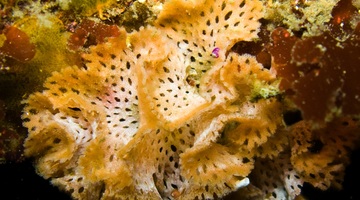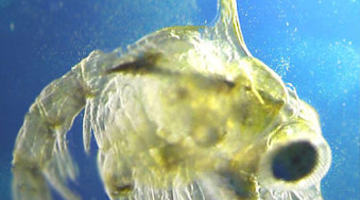In this video, Associate Professor Abby Smith, from the University of Otago, talks about bryozoans – their classification, their ability to band together in colonies and their varied habitats.
Point of interest
What are the key characteristics of plants? What are the key characteristics of animals?
Transcript
ASSOC PROF ABBY SMITH
So the bryozoans are a group of animals that are a phylum, which means that they are a very large taxonomic group – another phylum that you might know is the molluscs or the echinoderms – so bryozoans are a group as large as that. So just as there are different kinds of molluscs – bivalves and gastropods and chitons – there are different kinds of bryozoans. There are freshwater bryozoans and marine bryozoans. There are bryozoans that have no shells and bryozoans that make a shell. The kind that I study are the ones that make good solid robust shells and live in the sea, and they’re so small that they can’t really reach up into the water column and catch the animals or dust of whatever is in the water that they need to eat. And so they band together to form a colony. A colony is like an apartment building, where every one, all the different critters live in their own little flats, but they have doors that they can open and they can interact with each other. Bryozoan colonies don’t really look like animals – they look a little like little trees or flowers or something – but to look at the level of the individual, they do look like an animal. They are a little worm with a nose that has tentacles round the outside, and they sit inside their little box, and when they think it’s a good idea, they open the door and poke their tentacles out and catch something. So they aren’t particularly different from other animals you know. They’re just really, really small, and the colonies they make by gluing together look a little like plants. So when corals band together, we call a whole bunch of corals together a reef. Bryozoans don’t quite produce anything quite so massive because they’re more tree-like and have a lot more spaces in them. They produce a structure that’s a little less, a little less organised than a coral reef and a little less dense, and so we have adopted the word ‘thicket’ to describe a bunch of bryozoan colonies all together. Most people will not find a bryozoan very easily, but in the Northern Hemisphere, people know bryozoans as little crusts on kelp fronds. So if you’ve picked up a kelp frond at the beach and there has been a little white crust that looks like a tiny net on it, that was a bryozoan, and the little holes in the net were the individuals. In the Southern Hemisphere, they are still important in deeper waters. So here off Otago, when the water depth is between say 60 and 90 metres – too deep for us to dive to – in the dark, down there on the shelf, there are bryozoans growing in great numbers, growing together to produce sort of thickets of colonies.
Acknowledgements:
Dr Andrej Ernst
Emily Jones
Peter Batson of DOQ Productions
Shane Anderson
Wyn Rolls, Sir Wilfred Grenfell College, Memorial University of Newfoundland



